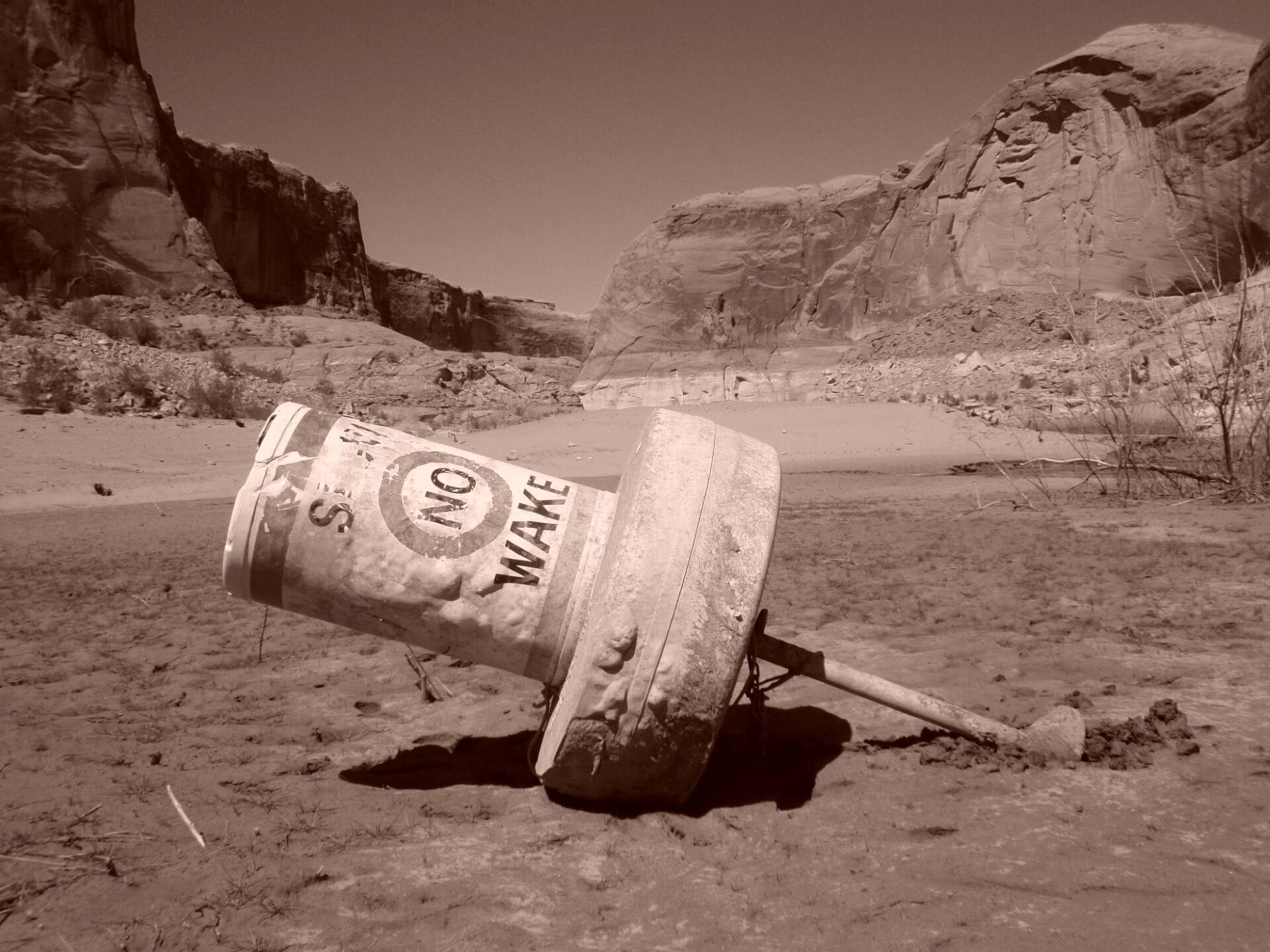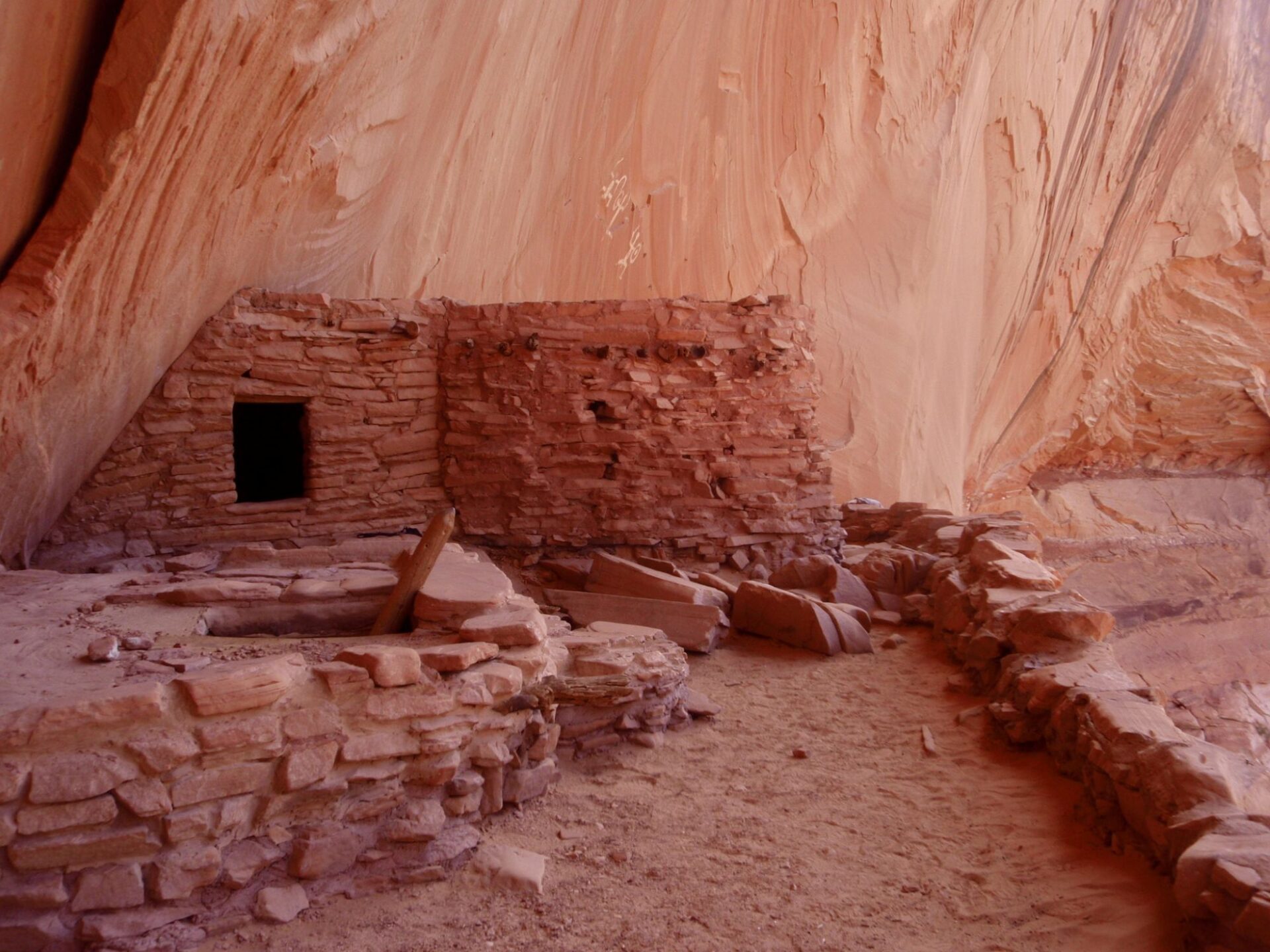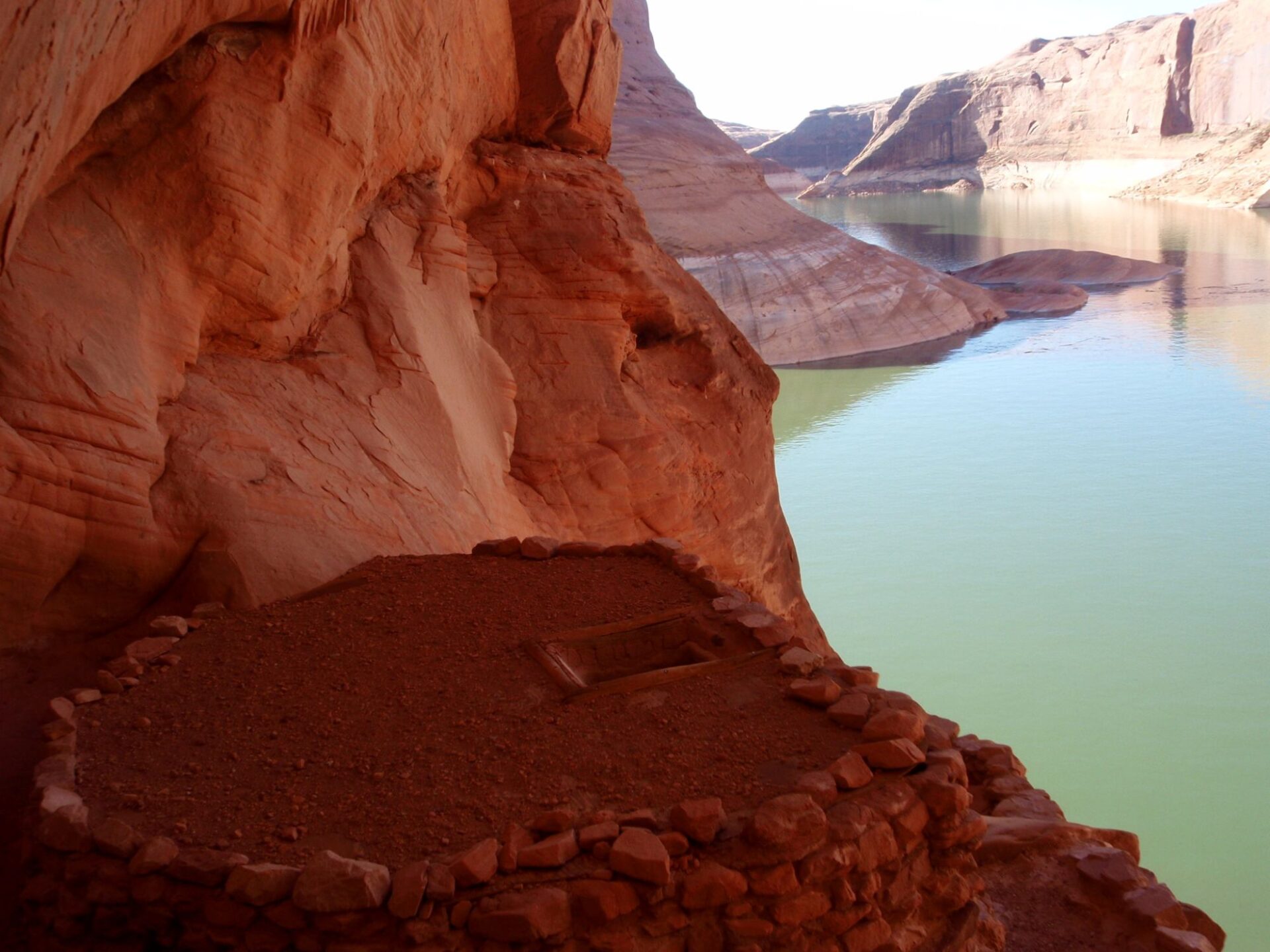- Home
- >
- Uncategorized
- >
- The Glen Canyon Archaeological Salvage Project
R. E. Burrillo, Archaeology Southwest Research Associate
Do not distribute or reproduce without permission.
The backstory behind the Glen Canyon Archaeological Salvage Project (or Glen Canyon Project for short—often shortened even further to GCP) is kind of a tangled mess. Seriously, you could fill up a whole bookshelf with all the books, magazine articles, newspaper articles, letters, signs, and protest albums just about what a stupid idea Glen Canyon Dam was. And the mighty GCP wouldn’t have happened without it.
Soon after Major John Wesley Powell conducted his historic inventory of the Colorado River area back in the 1870s, he sent out a bunch of reports that highlighted some serious issues we’d likely face as a result of potential—and very likely—extended droughts in the arid intermountain West. He hammered on three main points:
- Don’t sell off farmland that isn’t near good water sources,
- Use natural watersheds to draw property lines instead of making random lines on a map (to cut down on fights over water), and
- Steer clear of letting private companies handle water projects.
The gist of Powell’s missive was that communities should be planned around available water instead of just expanding mindlessly and scrambling to find water later. However, the kind of centralized planning he was suggesting didn’t really sit well with the American ideals of free settlement and enterprise—then or now. So, most people just politely brushed him off, which would simply be annoying if doing so hadn’t also turned out to be rather catastrophic.
Three months before Major Powell’s death in 1902, the federal government created a reclamation program that lit the fuse on a century of dam- and canal-construction projects for which the government—which is to say: taxpayers—footed most of the bills. These, in turn, precipitated homesteading and urban growth beyond Powell’s worst nightmares, including large cities like Las Vegas being constructed in places where virtually every drop of water needs to be hauled in by trucks. Small farmers, whom Powell saw as the heart and destiny of the American West, were outcompeted by urban growth and the development of corporate mega-farms that could import water over hundreds or thousands of miles. But I’m getting ahead of myself.
Scouting for potential dam locations was a major focus of all the geographic mapping projects of the late 1800s and early 1900s, and a dam was planned at the narrowest chokepoint of Glen Canyon as early as 1924. It was one component of the grand vision encapsulated in the Colorado River Compact, signed in 1922 by six states—Colorado, New Mexico, Utah, Wyoming, California, and Nevada—to decide how best to utilize and manage the mighty but erratic Colorado.
According to historian Russel Martin, the state of Arizona didn’t ratify the Compact until 1944, the same year that a treaty with Mexico allocated 1.5 million acre-feet of water to them per year, because they were wary that California might try to make use of their share. People tend to forget this in the modern era, but the United States is really a confederation of 50 countries who share a (more or less) common language and a (more or less) common culture, and things like states arguing with each other over who gets the snow after it melts and runs down the Rockies serve as handy reminders.
The Glen Canyon dam site ended up not being dammed in the 1920s, for reasons having partly to do with its remoteness and the nightmarish logistics of hauling people and equipment there but mostly to do with California not wanting the “virtual faucets” of the Colorado to be built “in what amounted to hostile territory” in the upper basin (see last paragraph for both source and explanation). Instead, Hoover Dam went up downstream and created Lake Mead.
However, it didn’t take long for the states of the upper basin to realize that this put the only substantial reservoir on the Colorado River closer to California’s greedy hands than to their own, to which end they proposed to dam the Colorado at Glen Canyon after all—as well as several dams on the Gunnison, San Juan, and Green Rivers, including one in Dinosaur National Monument’s Echo Park, just to be safe. The state of Arizona was the biggest booster, because they wanted to be able to tap the reservoir for Phoenix and Tucson. California snarled.
Echo Park came to be favored over Glen Canyon in the minds of the Bureau of Reclamation for a number of reasons, chief among which was that its higher elevation and narrower canyons would beget less evaporation. The dam in Glen Canyon was still part of the plan, of course, but a big dam upstream meant that they could get away with installing a much smaller one down there. In his 1986 book Cadillac Desert, Marc Reisner makes a lot of harsh noise about the potential damming of Echo Park, pointing out its idyllic beauty as the Green River flows languidly through it. David Brower, head of the Sierra Club at the time of the actual proposal, was downright incensed. He and his organization kicked up a legal battle that raged for years over what he saw as a dam that would “not only destroy a unique wilderness area, but would set a terrible precedent for exploiting resources in America’s national parks and monuments.”
In the end, the environmentalists won—although an asterisk should probably be attached to that word, because winning Echo Park meant installation of a dam upstream in Flaming Gorge and proposal of an even bigger dam in Glen Canyon.
A lot of people have argued that Brower and the Sierra Club’s aggressive mission to save Echo Park essentially doomed Glen Canyon, so it’s worth reiterating in its own dedicated sentence that, no, Glen Canyon Dam was always part of the package. Scrapping plans for a dam in Echo Park and moving it farther upstream simply meant that, because of physics, the downstream dam in Glen Canyon had to be bigger. Nonetheless, Brower never stopped beating himself up for campaigning so hard on behalf of Echo Park instead of Glen Canyon. The decision to build the dam was finalized in 1956, shortly after which Brower finally got a chance to visit the place. He was crestfallen. Flooding Glen Canyon under a stagnant reservoir would come to be “America’s most regretted environmental mistake,” or so the Glen Canyon Institute quotes him, and he shifted all of his clout toward stopping it. It didn’t work.
Although a silver lining to this tale is also worth mentioning: Thanks to the vitriol and shameful regret engendered by these circumstances, Brower and a growing consortium of comrades both within and without the Sierra Club—including an organization he founded called Friends of the Earth, which now has branches in over sixty countries—managed to halt plans to build additional dams within the Grand Canyon. He was nominated for the Nobel Peace Prize three times for these and other efforts, although he never received it.
With Glen Canyon Dam a sure thing, two separate but principally related aftermaths sprouted forth: the fire and fury that marked the subsequent environmental movement in the West, alluded to above and including such lauded luminaries as Edward Abbey and Katie Lee; and a leviathan archaeological salvage effort that yielded mountains of data and a number of titanic figures in Southwest archaeology, including my dear friend and mentor Bill Lipe.
Banner image: Reflection on Lake Powell, Glen Canyon National Recreation Area, Utah, March 2020. Image: Roy Goldsberry via Wikimedia Commons, CC BY-SA 4.0
Here are some of my photos from when I worked in the GCNRA:



Explore the News
-
Join Today
Keep up with the latest discoveries in southwestern archaeology. Join today, and receive Archaeology Southwest Magazine, among other member benefits.